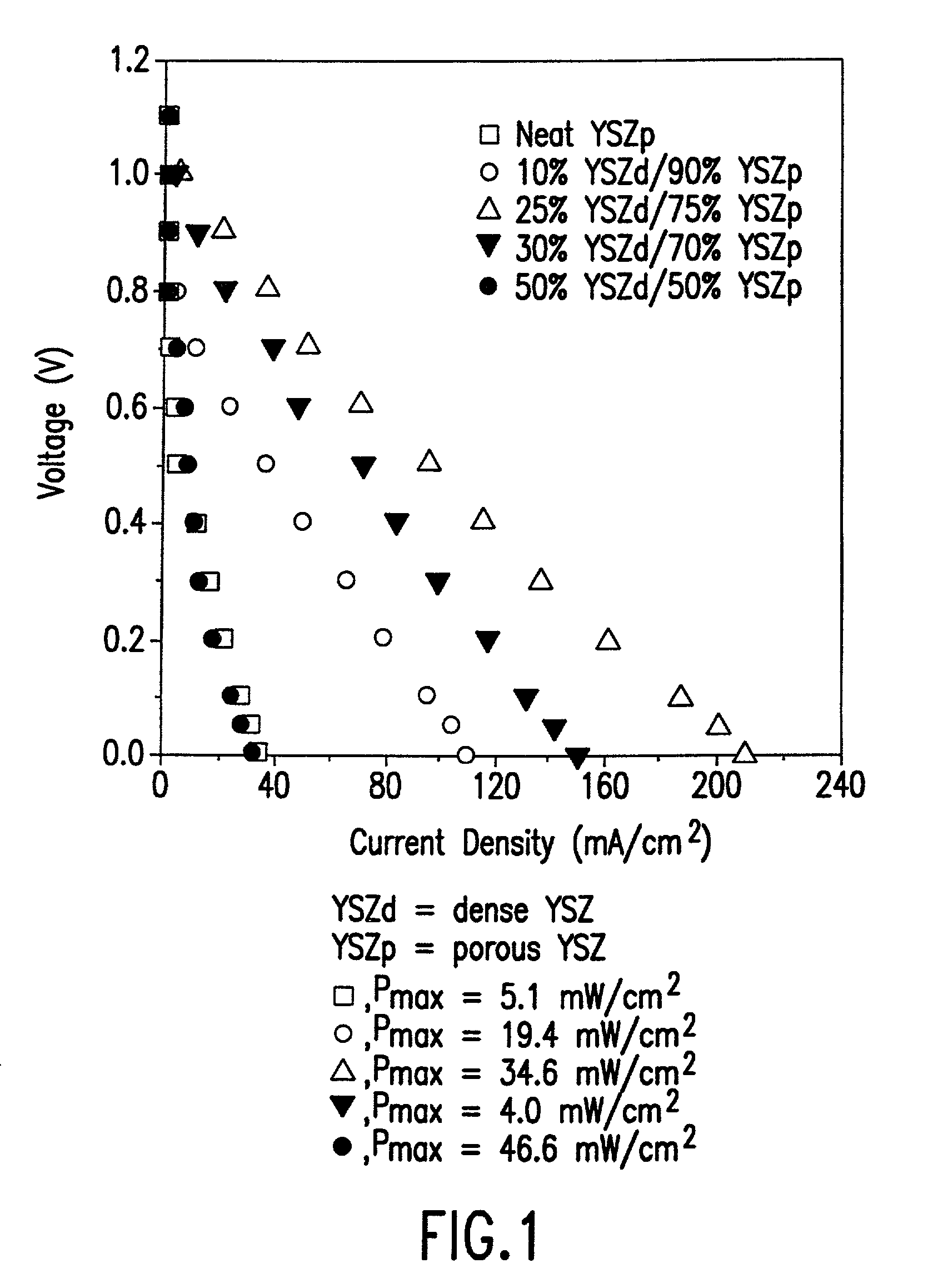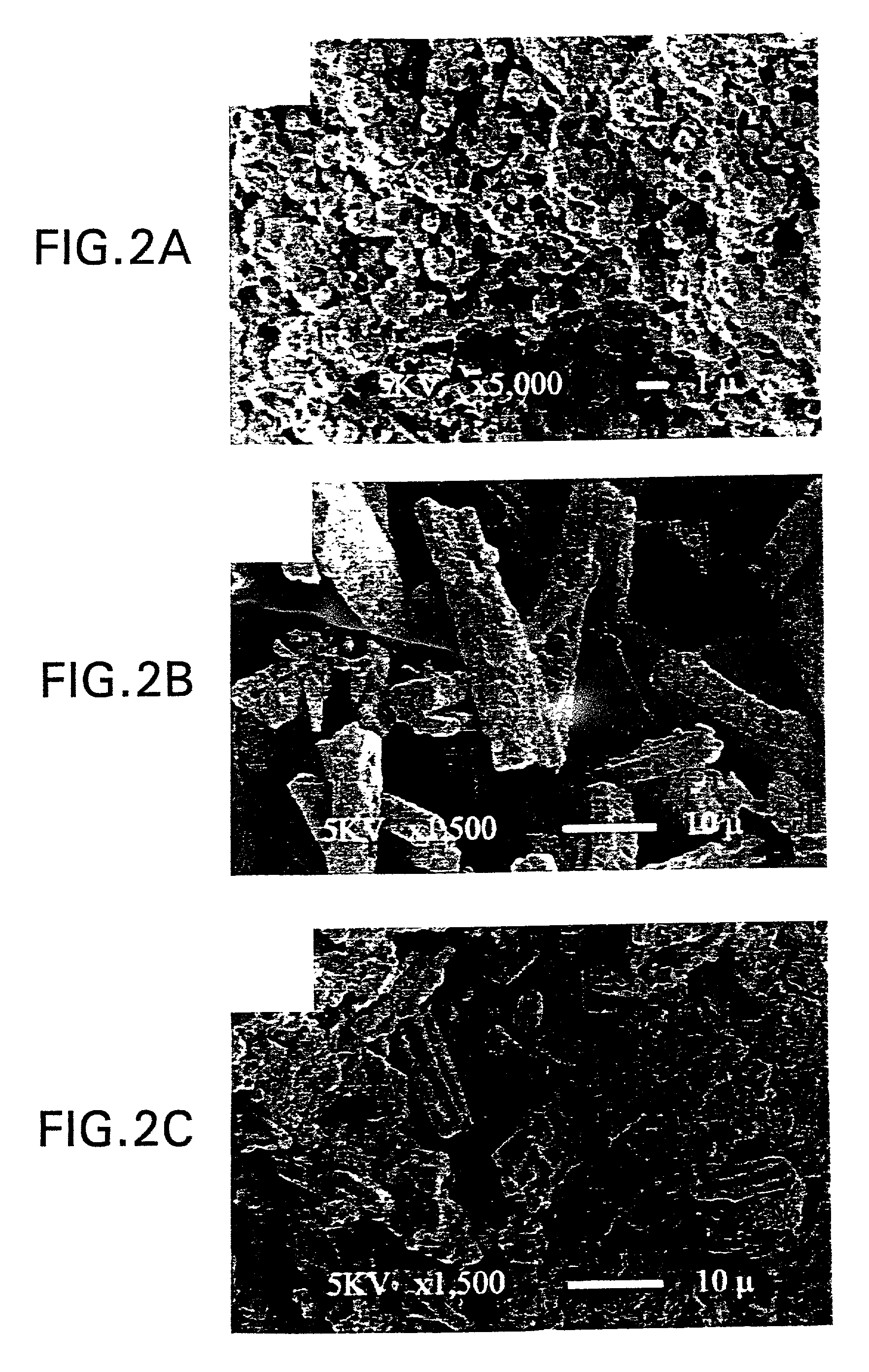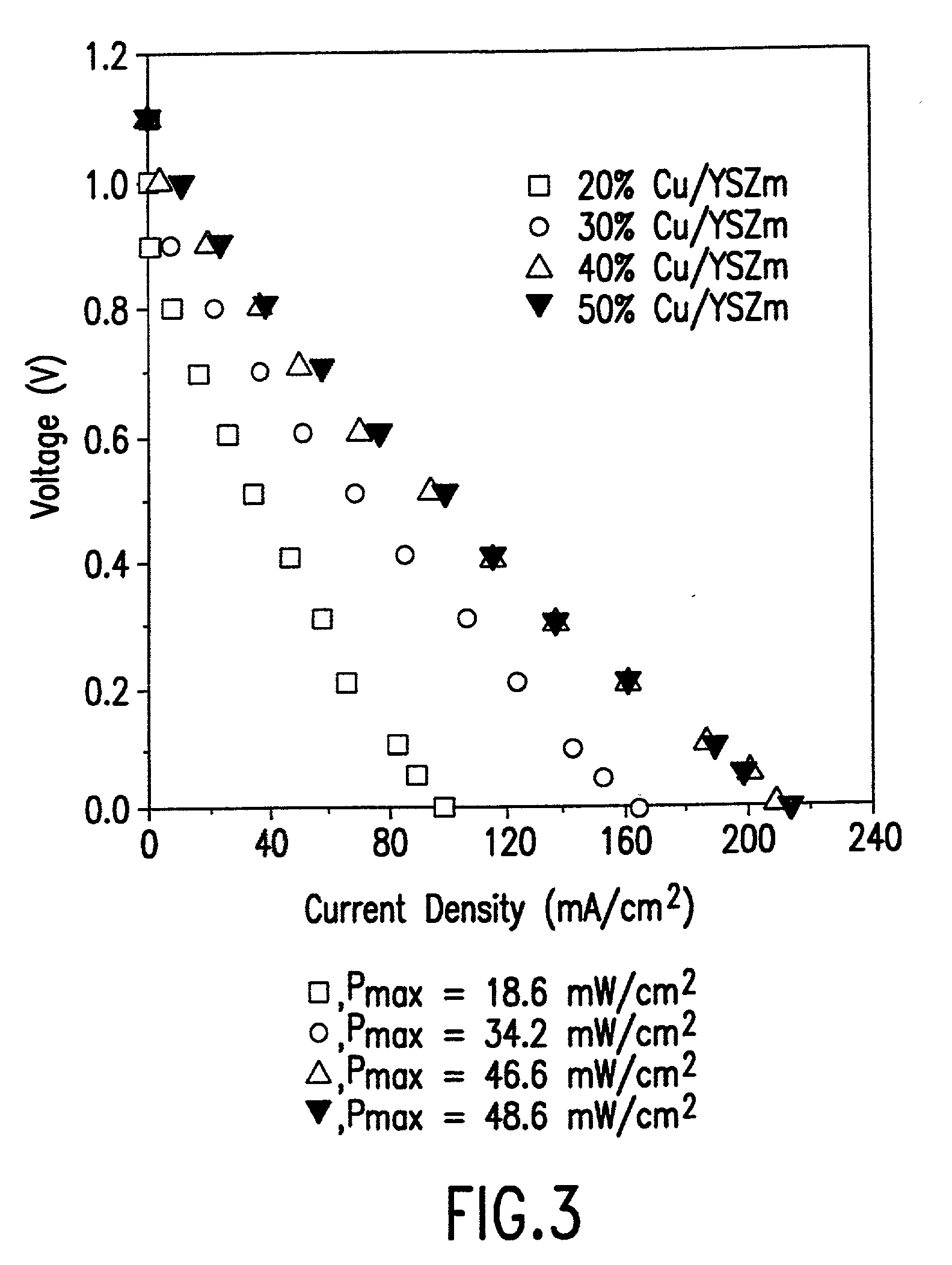Method for solid oxide fuel cell anode preparation
a fuel cell and solid oxide technology, applied in the field of solid oxide fuel cell anode preparation, can solve the problems of low electronic conductivity of oxides, stringent requirements on materials, and limited materials used in cell components,
- Summary
- Abstract
- Description
- Claims
- Application Information
AI Technical Summary
Benefits of technology
Problems solved by technology
Method used
Image
Examples
example
[0024] Yttria-stabilized zirconia (8% Y.sub.2O.sub.3, Tosoh TZ-8Y, denoted as YSZd) was used for the fabrication of the electrolyte and conventionally prepared anode for a solid oxide fuel cell. The electrolyte wafers were formed from YSZd by tapecasting, followed by calcination to 1400.degree. C. for two hours. The cathodes were formed from a 50% by weight physical mixture of Sr-LaMnO.sub.3 and YSZd powders, pasted onto the electrolyte with glycerol, and then calcined at 1250.degree. C. for two hours. The conventional, Ni-cermet anode was prepared using a 50% by weight physical mixture of NiO and YSZd, followed by calcination to 900.degree. C. This Ni-cermet was pasted onto the electrolyte using glycerol and calcined to 1400.degree. C.
[0025] In accordance with the method of this invention for preparation of an anode for a solid oxide fuel cell, a porous YSZ layer was prepared from physical mixtures of zircon fibers (YSZ, 75% porosity, with less than about 0.3% Si, Zircar Products, ...
PUM
| Property | Measurement | Unit |
|---|---|---|
| Fraction | aaaaa | aaaaa |
| Percent by mass | aaaaa | aaaaa |
| Percent by mass | aaaaa | aaaaa |
Abstract
Description
Claims
Application Information
 Login to View More
Login to View More - R&D
- Intellectual Property
- Life Sciences
- Materials
- Tech Scout
- Unparalleled Data Quality
- Higher Quality Content
- 60% Fewer Hallucinations
Browse by: Latest US Patents, China's latest patents, Technical Efficacy Thesaurus, Application Domain, Technology Topic, Popular Technical Reports.
© 2025 PatSnap. All rights reserved.Legal|Privacy policy|Modern Slavery Act Transparency Statement|Sitemap|About US| Contact US: help@patsnap.com



